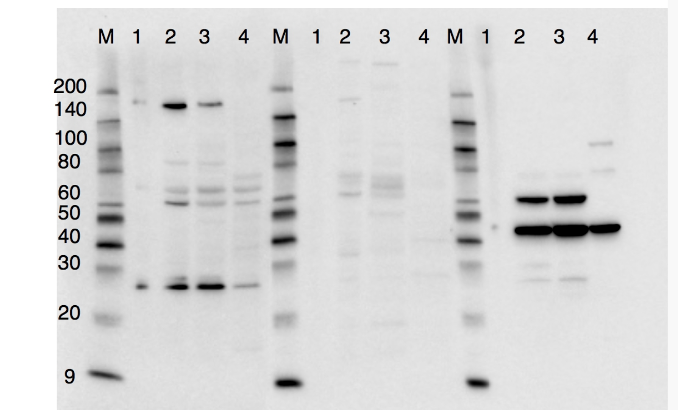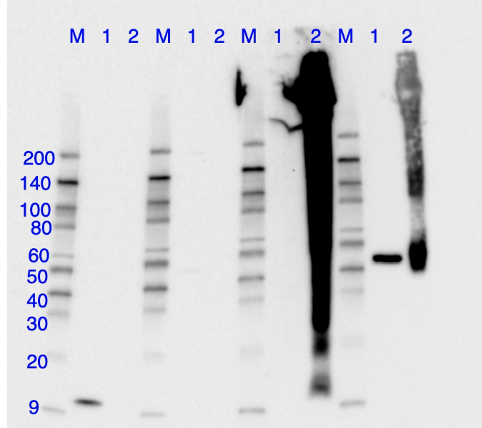The preparation of a cell lysate is crucial to the success of many assays, including techniques that use antibodies to characterize protein expression. Ideally, throughout the whole process of sample preparation, from lysate collection to analysis, your protein of interest would be well-preserved and protected from the activities of proteases and phosphatases. Proper storage and handling of the lysate are crucial to avoiding degradation and maintaining the ability to detect your protein.

Cell Lysate Preparation for Western Blot
Here are some tips to keep in mind when gathering and organizing lysates for an experiment such as western blotting.
- Use prepared lysates as quickly as possible, and store for as short a time as possible.
- Store lysates at -80℃ for as long as possible. For lysates that will need to be kept around long term, transfer freshly prepared tubes to an available -80℃ freezer to prevent degradation.
- Lysates have a shorter shelf life when stored at -20℃; long-term storage at this temperature is not recommended. CST recommends that lysates are stored at -20℃ for no longer than 3 months.
- There are certain cell lines, treatments, and phosphorylation sites that are more sensitive to repeated freeze/thaw cycles. Make an effort to minimize your freeze/thaw cycles as much as possible. One way to do this is to aliquot larger lysates into many smaller lysate volumes. Then a few tubes can be stored at -20 C while the rest are stored at -80 C until needed. This ensures that tubes only go through a few freeze/thaw cycles before they are used up to limit degradation.
- If you find that your lysates are degraded, prepare a fresh batch of lysate.
 Degraded lysate in lane 1.
Degraded lysate in lane 1.
-
Sonicating freshly made lysates can often release nuclear or membrane proteins, shear DNA, and make lysate less viscous. It is particularly useful when working with tissue lysate samples. CST recommends agitating lysates with a probe-tip sonicator on a medium or low setting by fully submersing the probe into the lysate for 10-15 seconds, three times over. Be sure to briefly cool your lysate on ice before and after each sonication step and avoid frothing the lysate.
Video: Lysate Sonication for Western Blotting
- Some cell lines or tissues are so protein-rich that they are likely to produce an over-concentrated lysate. An over-concentrated lysate will not run well in a western blot, since there is too much total protein in the gel lane. The result will be streaky or smeary, and will resemble the image below.
 Over-concentrated lysate in lane 2.
Over-concentrated lysate in lane 2.
- If you encounter an over-concentrated lysate, dilute 1:1 in SDS/DTT to reduce the total protein concentration of the lysate by half. This will typically result in cleaner bands in your western blot, as shown by the lysate dilutions in the image below.

Preserve your Hard-Earned Lysates
Regardless of whether you are just starting out in the lab or have been at it for years, the time, resources, and effort that you put into your experiments are valuable. By paying attention to these lysate handling guidelines, you will be better prepared to extend the shelf life of your hard-earned lysates.



/42157_chimeric%20antibody%20blog%20featured3.webp)


